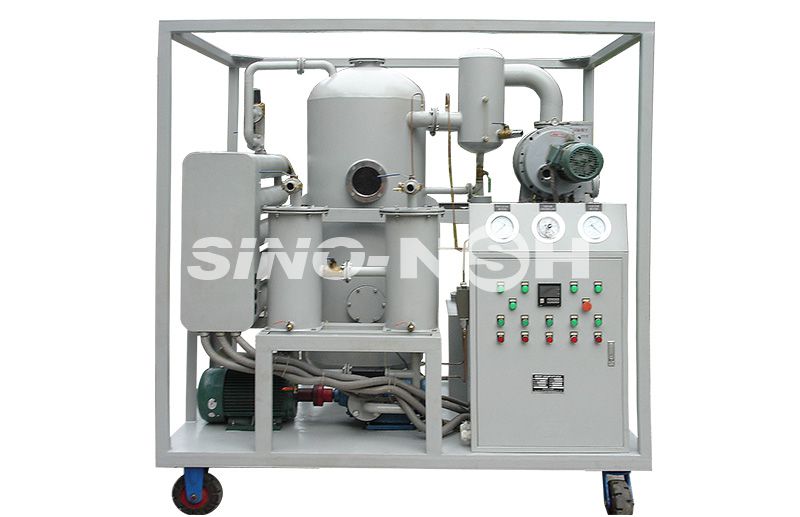E-mail seo@sino-purification.com

Time:2025-01-18 10:31:06 Reading volume:
A lubricating oil separator is used to separate contaminants (like water, gas, or solids) from lubricating oil to ensure it remains clean and efficient for use in engines or machinery. The working principle is typically based on centrifugal force, which is often employed in centrifugal separators. Here's a step-by-step breakdown of how it works:

Inlet of Contaminated Oil: The lubricating oil, which contains contaminants (such as water, solid particles, or gas), enters the separator under pressure.
Centrifugal Force Generation: Inside the separator, the oil is rapidly spun in a rotating drum or bowl. As the oil accelerates, centrifugal force causes the heavier particles (water, sludge, etc.) to move outward, away from the center of the bowl, while the cleaner oil remains closer to the center.
Separation of Contaminants:
Discharge of Clean Oil: The cleaned oil, which remains near the center of the rotating bowl, is then extracted and directed back into the engine or machinery system.
Discharge of Contaminants: The separated contaminants (water, solids, etc.) accumulate along the outer wall of the separator and are periodically drained or removed, depending on the design of the separator.
Lubricating oil separators are widely used in industries like shipping, power plants, and automotive engines, where maintaining clean oil is essential for the smooth operation and longevity of machinery.
Would you like more details on any particular type or application of lubricating oil separators?